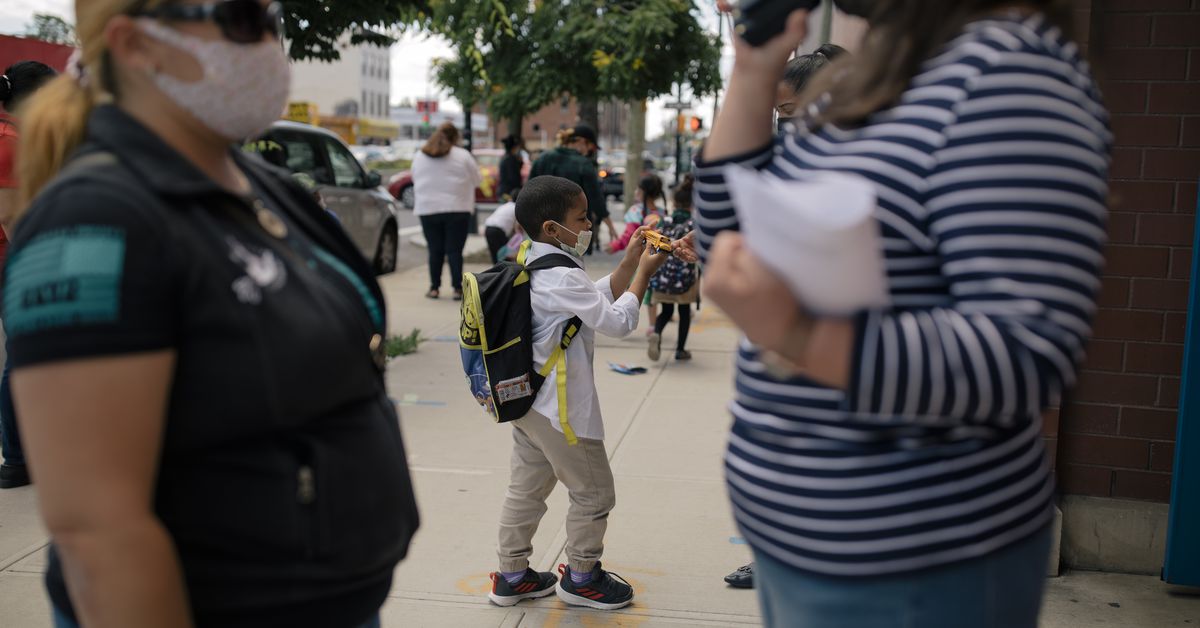NAACP, teachers focus on best practices for black students | News, Sports, Jobs
The Ohio Department of Education is working with the Ohio NAACP and educators from across the state in determining the best academic practice models for black students.
Youngstown activist Jimma McWilson, founder of the African Education Party, is a part of this process.
Receiving a quality education has always been the surest way of getting black children out of poverty — but in Ohio, black children are three times as likely to enter school poor, and twice as likely to start kindergarten ill-prepared and with health issues, according to an Ohio Department of Education study.
Approximately 80 percent of all black students are enrolled in six Ohio school districts: Columbus, Cleveland, Cincinnati, Toledo, Akron and Dayton. Most black students, 71 percent, attend a school with a high economic disadvantage rate, state data also shows.
With these and other issues in mind, the ODE and the NAACP are studying best practices. A team of educators, community activists, residents and students will be working, at least through the remainder of this year, to address the achievement gaps in order to bring educational parity between black and white students.
The group had its first viral meeting earlier this month. On June 18, members of the committee are meeting to discuss the next step they might want to take.
“One goal is to debunk the notion of educational inferiority being possessed by African-American students,” McWilson said.
McWilson said the group’s examination of education received by students in high poverty, and those in higher income school districts, will result in black students receiving better educational outcomes.
“It is how students are taught — and the education barriers that are removed — that help students achieve better outcomes,” McWilson said. “Two high poverty school districts — one in Youngstown, one in Steubenville — have had different outcomes after their students took standardized and non-standardized tests.”
Youngstown has over the years received F-grades on the state report card. But in 2019, the Steubenville school district, which has a 25 percent black student body and is a 100 percent poverty district, received a “B” state report card grade.
In addition, McWilson said Steubenville provides a lower per student investment for its students..
The group will try to determine the best practices needed to educate black children, he said.
“We will be going trough the history of public education and black children in Ohio, so we will be starting on the same page,” McWilson said. “Our children are still suffering from the ravages of intentional racism perpetrated when schools first became public.”
WHY NOW?
Ohio Board of Education President Laura Kohler said this committee was formed to achieve the state board’s strategic plan commitment of ensuring each child in Ohio schools has the opportunity to succeed.
“We had noticed, over a long period of time, that when you look at the data for black students they were consistently behind the achievements of their non-black peers,” Kohler said.
“Many people and organizations have over the years attempted to study this problem and make changes,” Kohler said. “I’m struck by the fact that very little has changed. Nothing seems to be working. We are nowhere near where we need to be.”
Kohler said the group will look at what individual districts have done to address the issue.
“We were aware that the state NAACP has been working to address the same issues,” she said. “Through a series of conversations we decided to work together. We want to understand what are the correlations of poverty, the quality of teachers, of the schools and what is happening in our students’ homes.”
While not being able to directly address what may be happening in the homes of individual students, Kohler said the group may be able to address what is happening in the schools.
Working with Paolo DeMaria, superintendent of public instruction, the effort is bringing together education experts from across the state, as well as bringing in speakers from across the country.
NO MANDATE
Kohler emphasized the participant will be able to make policy recommendations and provide help to school districts in working on ways to improve, but are not able to mandate solutions.
“Curriculum is locally controlled,” she said. “We will increase the variety of resources and support to school districts, so they will be able to make recommended changes on their own.”
Committees are looking at different strategies for bridging the gap between what is being learned by black and white students.
Thomas Roberts, president of the Ohio Conference of the NAACP, noted the civil rights organization had been working on these issues for three or four years, when during a conversation with Kohler it was realized the two organizations should be collaborating.
“We were looking at education from an African American perspective,” Roberts said. “There is a fierce urgency in getting this done now. We cannot wait to see what happens to another generation. We must remove barriers that are hurting some in achieving their educational goals.”







